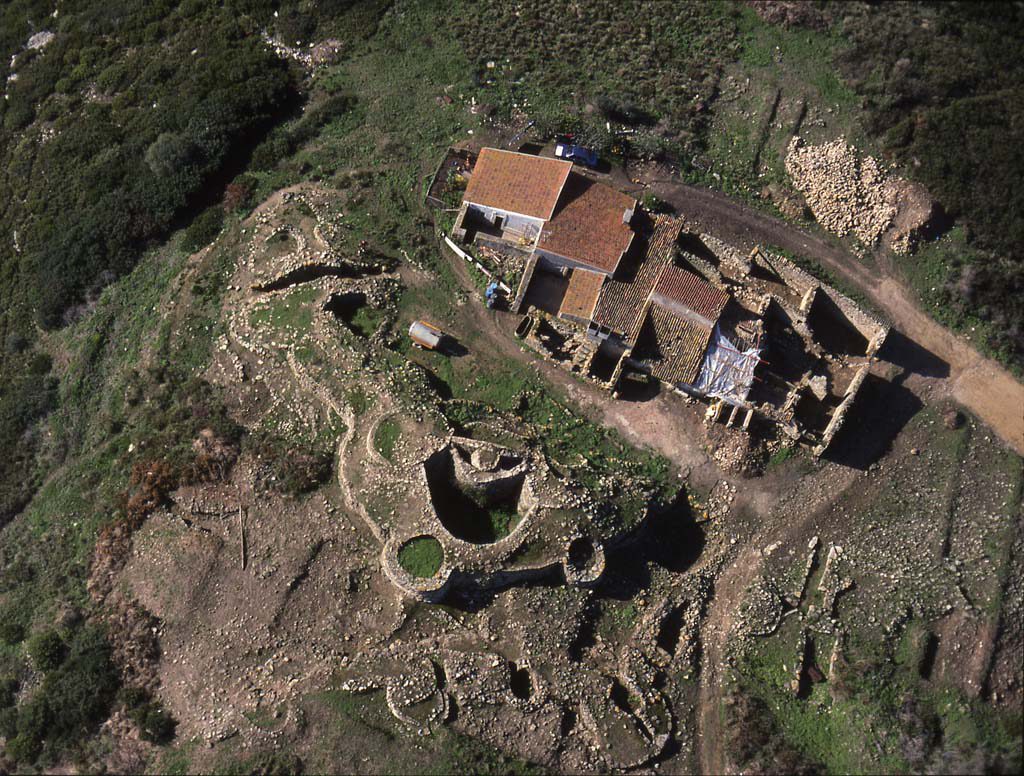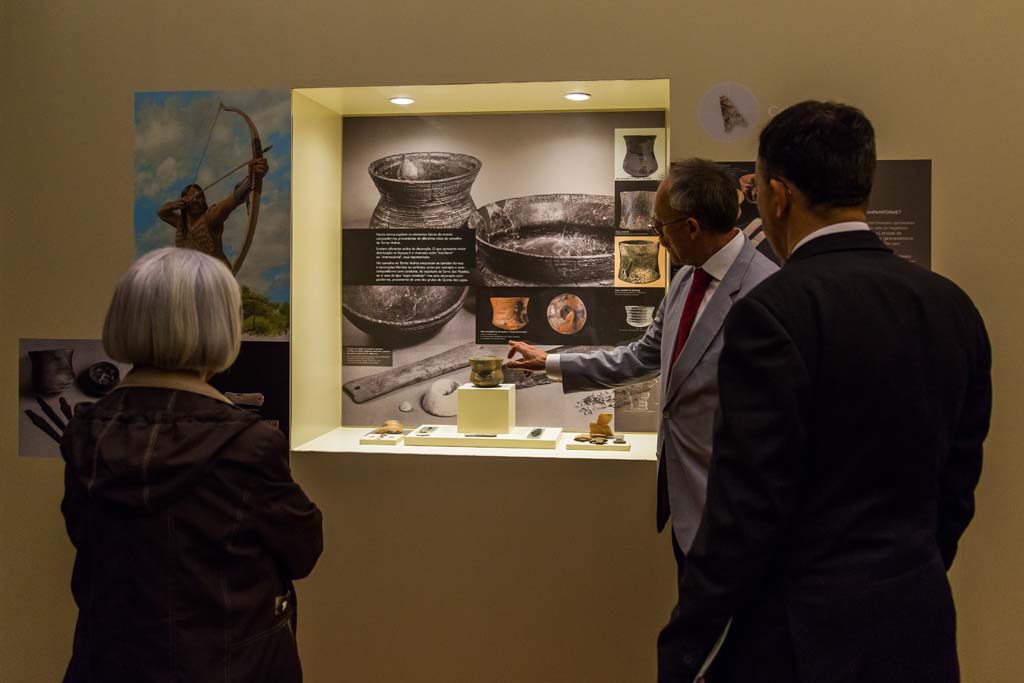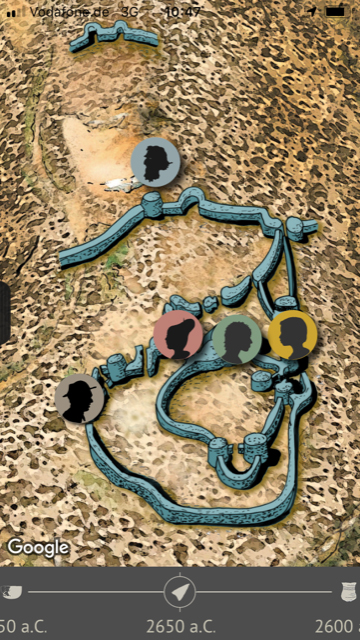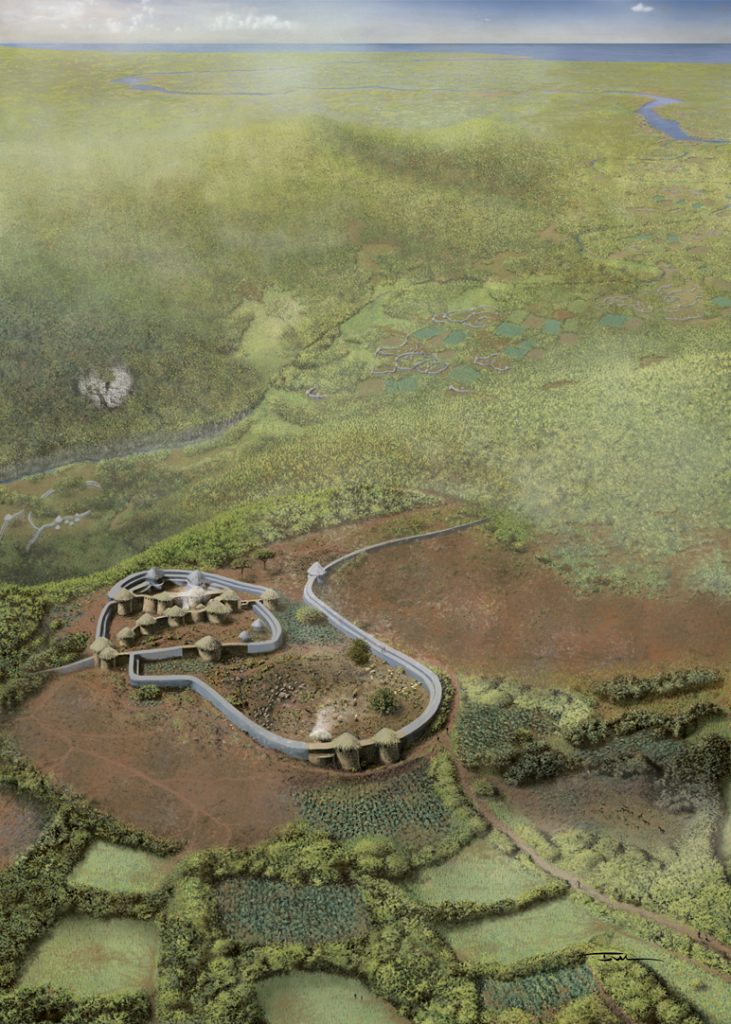The fortified settlement of Zambujal near Torres Vedras, approx. 50 km north-west of Lisbon (Portugal), dates from the 3rd/2nd millennium BC. In the core area, walls up to 4 metres high still survive, offering a striking insight into the Chalcolithic, or Copper Age. Thanks to systematic excavations by the DAI Madrid since 1964, Zambujal is now one of the best documented sites of the period on the Iberian Peninsula. The research campaigns have yielded important findings about the beginnings of fortification and of metallurgy as well as social development in south-west Europe.

Following extensive restoration of the ruins, the research results are now ready for locals and tourists to explore on a new visitors’ route with multilingual info panels. Wooden bridges and walkways have opened up new areas of the site. Anyone wanting to find out more can download the “Zambujal” app on any currently available smart phone model. The virtual visitor can explore the ruins using a map and a timeline. At various points (s)he can listen to audio streams about the development and history of Zambujal, find the biographies of the excavators and much more besides.

The most important finds and results of 50 years of excavation at Zambujal were shown at the exhibition “Histórias do Zambujal” in 2017 (Photo: Maria Latova Gonzalez, D-DAI-MAD-MLA-DG-008-2016-114) 
With the “Zambujal” app, you can enjoy a virtual exploration of the ruins and listen to audio streams at various spots (Screenshot: DAI) 
Reconstruction of Zambujal, its hinterland, the valleys of Ribeira de Pedrulhos and of the Rio Sizandro as far as the Atlantic Ocean in the second half of the 3rd millennium BC (Abb.: I. Gromicho nach Angaben von M. Kunst)